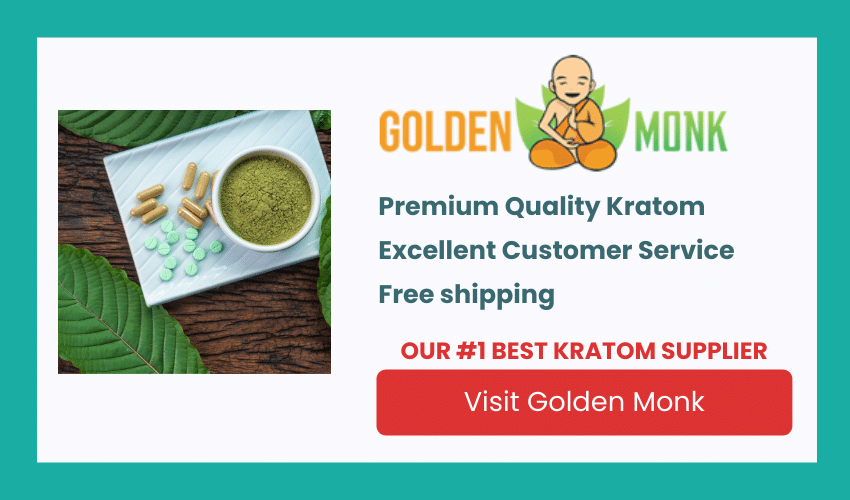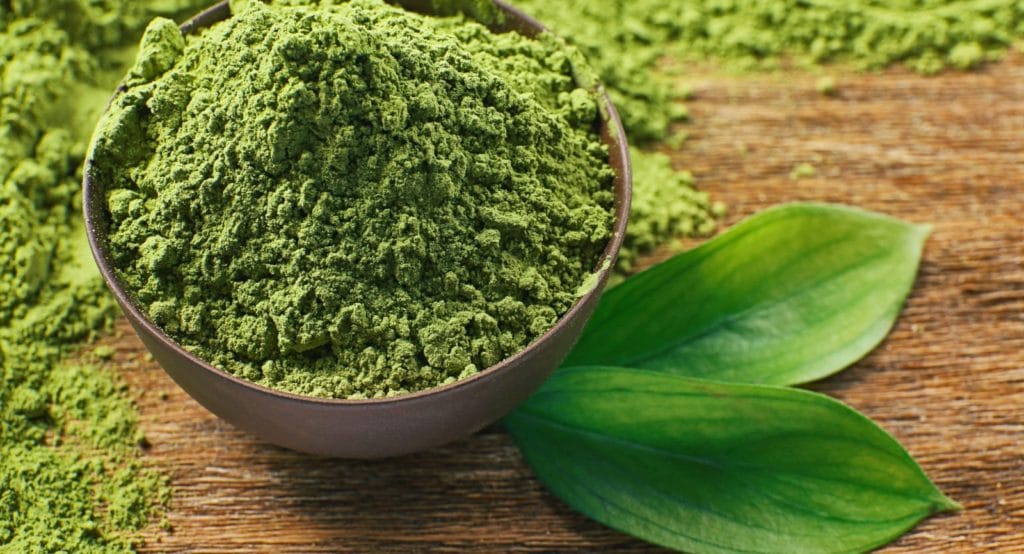Kratom is a tree in the coffee family native to Southeast Asia. It has been used for centuries to ease pain, increase energy and to elevate mood. Known by the scientific name of Mitragyna speciosa, the tree's leaves contain two major active alkaloids. These are called mitragynine and 7-hydroxymitragynine. Mitragynine accounts for about 66 percent of the total kratom alkaloids. Alkaoids are nitrogen-containing compounds present in many plants. For example, morphine is an alkaloid in the opium poppy plant.
7-hydroxymitragynine has powerful opioid-like properties and binds to the mu receptor sites in the brain. The mu receptor is responsible for such opioid effects as analgesia and euphoria. However, kratom appears to be much safer than opioids like oxycodone or fentanyl in that it doesn't recruit beta-arrestin, a protein associated with dangerous opioid overdose effects. 7-hydroxymitragynine is present in the kratom leaf in trace amounts of two percent or less. This content can vary widely and can even be undetectable in some cases.

Types of Kratom
There are three main strains of kratom:
- Green vein
- Red vein
- White vein
This term refers to the color of the stems and veins of the leaf. Green vein is more associated with energy and a euphoric feeling. White vein is uplifting, too, with more of a focusing aspect to it. Red vein is typically sedating, mellow and analgesic. It's widely used for pain relief. The effect of kratom is strongly dose-related. Small doses of one to three grams will often be energizing, similar in effect to that of caffeine. Middle to higher doses in the five to seven gram range will often cause sedation, an opioid-like euphoria and pain relief, especially with the red vein strains like Bali. There is also Maeng Da kratom, which is bred to be higher in alkaloids.
More About Kratom
Kratom powder is produced by harvesting the leaves, drying them and then converting the dried leaves into a fine powder. Kratom can be found in capsules, as a powder and in various strengths of extracts. Many people find the taste to be quite objectionable and prefer the capsules, but some people take the powder as is and chase it with a liquid. Sometimes, it's prepared as a tea with flavorings like sugar and lemon. For the best effect, take kratom on an empty stomach. That's just one easy way to potentiate the effect of kratom. Potentiate means to increase the effect. This article will now focus on some simple ways to make your kratom stronger by using kratom potentiators.
Since 7-hydroxymitragynine is present in such low concentrations in the kratom leaf, you may want to know how to make what small amounts there are work better. Potentiation will also allow you to take smaller doses and avoid any possible tolerance effect for as long as possible. Tolerance occurs when the body becomes to used to a substance and more is needed for the same effect. Tolerance happens with many drugs, such as opioids, amphetamines, benzodiazepines and hypnotics. You can make the most of your kratom dose by trying some of the following suggestions:
Grapefruit Juice
Grapefruit juice is one of the best kratom potentiators. A compound in grapefruit juice interferes with an enzyme in the body needed to break down the alkaloids in the kratom. When this enzyme is disabled, more of the alkaloids may be absorbed by the body. It may help to make more of the scarce 7-hydroxymitragynine alkaloid available. Grapefruit juice is also rich in antioxidants, potassium and vitamin C.
Freezing
Freezing your kratom for an hour or more before consuming it may help to increase its strength by breaking down the plant material so the body can absorb more of the active alkaloids.
Note: You can mix kratom powder with grapefruit juice and freeze it. The freezing will break down the cell membranes in the kratom and mix with the juice, increasing its strength. You can also weigh out doses of kratom, mix with grapefruit juice individually and then freeze each dose as an ice cube. This gives you an exact, enhanced, easy to take form of kratom that is ready anytime, already powered with three kratom potentiators.
Apple Cider Vinegar
This is a healthy substance used in everything from skin care to hair care to home cleaning. It's a highly acidic, and that's why it's on this list of kratom potentiators. The acid enhances absorption of the kratom alkaloids from the stomach and also helps to delay metabolization. Lemon juice would also have a similar effect as another one of the more powerful kratom potentiators.
Take on Empty Stomach
This is very important, and it requires nothing more than timing. A empty stomach can make a huge difference in the kratom effect. It will be absorbed faster and more completely. Avoid a high-fat meal within two hours of taking kratom. Fat slows the stomach's metabolism and may interfere with the optimal kratom effect. Some grapefruit, lemon or apple cider vinegar is acceptable, because these are great kratom potentiators, but avoid taking kratom with food.
Turmeric and Black Pepper
Turmeric is common spice found in supermarkets, natural foods markets and online. It's the spice in curry powder that gives it its characteristic bright yellow coloring. Turmeric contains curcumin, a potent anti-inflammatory antioxidant that helps with arthritis pain and depression. It also has potential heart-protective effects, and it may help to prevent Alzheimer's disease. It's a good kratom potentiator because it increases the potency of the kratom.
You can make curcumin work even better by including black pepper, which improves the absorption of kratom alkaloids for a more powerful effect. Turmeric has a bitter taste. You can try mixing turmeric with black pepper and kratom powder and then putting the mixture into clear gelation capsules. This gives you two kratom potentiators. It's also a convenient way to standardize your doses and carry kratom with you, too.
Valerian Root and Chamomile
Valerian root is an herbal remedy that has been used for centuries to relieve anxiety, insomnia and to promote a relaxed state. Chamomile is a small, pretty yellow flower that has long been used to relieve anxiety and aid in natural sleep. It may help with digestion, and it's a strong antioxidant. Both of these herbs may help as kratom potentiators, especially with red kratom. If you're looking for help with pain, anxiety and insomnia, try taking your kratom with these herbs. Both are available in dry form and supplement form. A large cup of valerian root and chamomile tea is a good way to get two kratom potentiators together to boost the sedative effects of higher doses of kratom. Chamomile has a mild, floral, pleasant, slightly sweet taste.

Cat's Claw
This herb has long been used for its sedative effects. It contains alkaloids similar to those found in kratom, so cat's claw may further increase kratom's effects when the two are used together. It's available in dry form. It can be used as a tea, but its alkaloids give it a bitter taste. You can sweeten it with a bit of stevia.
These are just a few suggestions to help you get the most out of your kratom with kratom potentiators. It will help you save money, too. As with any dietary supplement, you may want to speak with your physician before starting any kind of herbal therapy.

